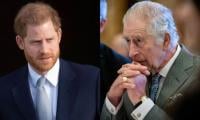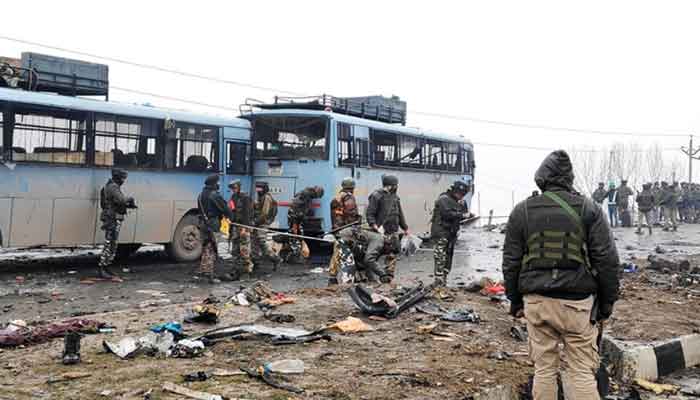History of False Flag Indian operations dates back to 1971
India had actually wanted to dilute the effects of Nawaz Sharif’s speech at the United Nations. Well, India keeps spelling out this rhetoric and the timing of airing such concocted and fabricated fairy tales is extremely significant.
LAHORE: The Indian political and security establishment, ably assisted by their chosen media houses, is notorious since 1971 for designing bizarre False Flag operations to deceive the world, defame Pakistan and disguise the actual source of responsibility, though each time New Delhi has tried to cover up its intelligence failures and faulty policies, its internal investigative reports have mocked all such claims.
The term “False Flag” originally referred to pirate ships that flew flags of countries as a disguise to prevent their victims from fleeing or preparing for battle. The Pulwama terror incident is not the first time the Indians have resorted to the use of a False Flag to hide the reality and accomplish their ulterior motives.
In September 2016, just a day before the-then Pakistani Premier, Nawaz Sharif, was gearing up to address the United Nations General Assembly and apprise the world of the Indian atrocities in Held Kashmir, those at the helm of affairs in New Delhi had yet again accused Pakistan of attacking a military camp in Occupied Kashmir without any substantial proof.
India had actually wanted to dilute the effects of Nawaz Sharif’s speech at the United Nations. Well, India keeps spelling out this rhetoric and the timing of airing such concocted and fabricated fairy tales is extremely significant.
On January 2, 2016, after the Pathankot Air Base in Indian Punjab was reportedly/allegedly attacked by militants, a banned outfit “Jaish-e-Muhammad” was promptly blamed by key government functionaries in New Delhi, instead of first apprehending the miscreants and carrying out the necessary combat operations to clear the facility.
Within hours, an internal probe had thrown an egg on Indian government’s face. On June 2, 2016, as “Zee News” had reported, the Director General of Indian National Investigation Agency, Sharad Kumar, said that there was no evidence to indicate the direct complicity of the Pakistani government or the Pakistani agencies at the Pathankot attack.
The “Zee News” had quoted Kumar as saying: “No evidence suggests that Pakistan government or Pakistani government agency was helping Jaish–e–Mohammed or Masood Azhar or his aides to carry out Pathankot attack.”
Following Director General Kumar’s statement, the Ministry of Foreign Affairs in Islamabad had said the Indian inquiry had vindicated Pakistan’s longstanding position in the context of Pathankot.
The statement by the Pakistani Foreign Office had added, “The spirit of cooperation is manifested in the action we (Pakistan) took in the wake of the alleged incident.” It is worth recalling that the Pathankot Air Base attack had occurred just days after Indian Prime Minister Narendra Modi had paid a ‘surprise’ visit to Prime Minister Nawaz Sharif on his birthday and the occasion of his granddaughter's wedding; a move that appeared to promise better relations between the two nuclear rivals.
History of False Flag Indian operations:
Research reveals that on January 30, 1971, the Indian spy agency RAW had conducted a False Flag operation by making its operatives hijack a Fokker “Ganga” from India to Lahore.
The Indian government had immediately said Kashmiri freedom fighters, Hashim Qureshi and Ashraf Butt, were behind the hijacking. It had disallowed Pakistani aircraft from using its air space forthwith. Pakistani planes could no longer fly to the restive East Pakistan (later Bangladesh).
On February 1, 1971, the passengers and crew of “Ganga” were released in Lahore and the aircraft was burnt. Interestingly, the Indian Airlines plane “Ganga” was already withdrawn from service but was re-inducted days before the hijacking.
The events that followed showed that the purpose behind this False Flag operation was to cut off east-west air flights of Pakistan so as to give free hand to Mujibur Rehman and his cronies to speed up their secession plan and create Bangladesh.
This over flight ban in the run up to the December 1971 Indo-Pak War later had a significant impact on troop movement into erstwhile East Pakistan as Islamabad had to send reinforcements through a longer air route via Colombo.
East Pakistan thus remained cut off from West Pakistan till the very end and the “hijacking” enabled Indian armed forces to fuel the insurgency.
(Reference: Indian Colonel Anil Athale’s June 2, 2005 article for a media house Rediff.com)
From 2001 till 2008, Pakistan was held responsible for most acts of terror taking place on Indian soil.
These events included the Samjhota Express train blasts killing over 50 Pakistanis, the bombing in Mecca Mosque of Hyderabad Deccan and a 2008 blast in a Malegaon (Maharashtra state) mosque.
The November 26, 2008 Mumbai attack is yet another candid example of Indian False Flag operations, aimed at deflecting the attention of the world from the unabated genocide in Occupied Kashmir, create a stir to pressurise Pakistan.
Hemant Karkare, the chief of the Maharashtra Anti-Terrorist Squad, was killed on the day of the Mumbai attacks.
He had led the inquiry into the 2008 Malegaon terrorism and had arrested 11 suspects in late October 2008.
All those handcuffed were Hindu extremists, including a student leader Sadhvi Singh Thakur, Swami Amritananda alias Dayanand Pandey, a retired Major Ramesh Upadhyay and a serving Indian Army officer Lt. Col. Prasad Shrikant Purohi.
Most of the accused hailed from a radical Hindutva group called “Abhinav Bharat” with prior links to the radical “Sangh Parivar” organization.
Hemant Karkare had identified that Hindutva organizations were responsible for terrorism in India, and had already made many political commentators call it “Hindutva Terror” or the “Saffron Terror.”
Opposition parties, including the BJP and Shiv Sena, had alleged that the arrests were made under the pressure of the incumbent government, in an attempt to appease India's Muslim population.
These political parties had dubbed Hemant Karkare a ‘traitor to the nation’ for his investigation in this direction.
In an investigation, an Indian news agency “Headline Today” had found that a substandard bullet-proof jacket had actually been issued to Karkare.
However, according to the post mortem report, the quality of the vest was not a factor in his death.
(References: The Indian Express, the Hindustan Times and the CNN)
By the way, the world is still trying to make sense of what happened on 26/11 in Mumbai; how a team of 10 gunmen effectively challenged the highly trained Indian commandos for three days in the business hub of the country?
Many are still finding answers to the unsolved riddle as to how these men had managed to travel in a boat from Karachi--totally undetected--in the Arabian Sea and the Indian Ocean before reaching the shores of Mumbai!
Remember, in November 2018, Indian media had reported that Ajmal Kasab, the chief suspect of Mumbai attacks, was issued a domicile certificate by the Uttar Pradesh state, adding that a probe had been ordered.
Ajmal was hanged at Yerwada jail in Pune in November 2012, and the Indian authorities had termed him a Pakistani citizen for many years.
The “Times of India” had quoted a concerned Uttar Pradesh State official, Pravendra Kumar, as saying: “Some unidentified person submitted an application with a photo of terrorist Ajmal Kasab in the month of October for the issuance of a domicile certificate at Bidhoona tehsil of the district. Subsequently, the authorities, without cross-checking the facts, issued the domicile certificate on October 21. As per details, terrorist Ajmal Kasab’s birth place is mentioned as Bidhoona and the name in the column of his father read as Mohd Amir while that of his mother Mumtaz Begum. The certificate bore registration number 181620020060722.”
-
 Canadian PM Visits China After A Decade Of Diplomatic Strain: What Deals Are In Focus?
Canadian PM Visits China After A Decade Of Diplomatic Strain: What Deals Are In Focus? -
 New York Plans Limited Rollout Of Self-driving Taxis
New York Plans Limited Rollout Of Self-driving Taxis -
 Sarah Ferguson Faces Painful Choice Between Peace, Family Bond
Sarah Ferguson Faces Painful Choice Between Peace, Family Bond -
 Nvidia Clarifies ‘no Upfront Payment Needed For H200 Chips Production’
Nvidia Clarifies ‘no Upfront Payment Needed For H200 Chips Production’ -
 Africa First: Nigeria Set To Approve Landmark AI Rules For Digital Economy
Africa First: Nigeria Set To Approve Landmark AI Rules For Digital Economy -
 WhatsApp Tests Built-in Supervision Feature Long Missing From The App
WhatsApp Tests Built-in Supervision Feature Long Missing From The App -
 Iceberg A-23A Turns Blue As Scientists Warn Collapse Is Imminent
Iceberg A-23A Turns Blue As Scientists Warn Collapse Is Imminent -
 FIFA Selects Stats Perform For Betting Data And Live Streaming
FIFA Selects Stats Perform For Betting Data And Live Streaming -
 Is Jessica Simpson Really Joining 'The Bachelorette'?
Is Jessica Simpson Really Joining 'The Bachelorette'? -
 Brayden Point Injury Raises Concern After Early Exit For Tampa Bay Lightning
Brayden Point Injury Raises Concern After Early Exit For Tampa Bay Lightning -
 Meghan Trainor Addresses 'toxic Mom Group' Rumours Again
Meghan Trainor Addresses 'toxic Mom Group' Rumours Again -
 Mattel Autistic Barbie Doll Aims To Boost Representation And Inclusion
Mattel Autistic Barbie Doll Aims To Boost Representation And Inclusion -
 William Makes Calculated Move To Future-proof His Public Role Amid Harry Return
William Makes Calculated Move To Future-proof His Public Role Amid Harry Return -
 Elijah Wood Breaks Silence On Possible Return To New 'Lord Of The Rings' Film
Elijah Wood Breaks Silence On Possible Return To New 'Lord Of The Rings' Film -
 Aaron Rodgers Wife: What The NFL Quarterback Has Said About His Marriage
Aaron Rodgers Wife: What The NFL Quarterback Has Said About His Marriage -
 Buckingham Palace Shuts Down Claims It Can Step In On Harry’s Security
Buckingham Palace Shuts Down Claims It Can Step In On Harry’s Security




